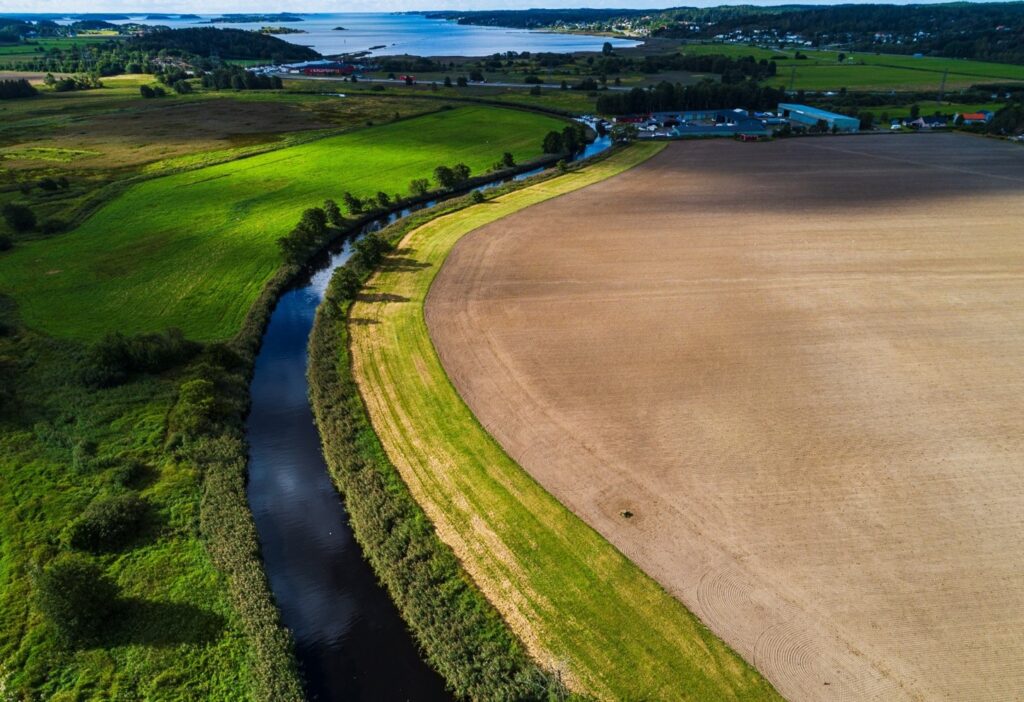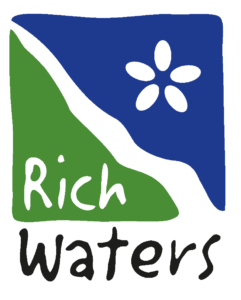
Summary
The EU Water Framework Directive (European Parliament and Council Directive 2000/60/EC) establishes a framework for the European water policy. The directive aims to establish a framework for uniform rules at EU level for the protection of European waters; lakes, streams, coastal waters and groundwater.
Increased levels of nutrients in water lead to changes that are not desirable from an ecosystem perspective. For the majority of inland waters and more than half of coastal waters, agriculture is deemed to be a significant source of pollution.
The water authorities analyse which nitrogen and phosphorus mitigation measures that need to be prioritized in order to achieve the environmental quality standard good ecological status and to what extent the measures need to be implemented. The most cost-effective measures in agriculture are prioritized with the aim of covering the need for measures for the various water bodies.
The water authorities management of the quality of the aquatic envrionment is a system that requires large amounts of input data at the water body level. Parts that require a lot of input are the impact analysis and the action analysis, respectively. This project has focused on three different issues in order to contribute to a better knowledge base in water management.
A greater number of quantified nitrogen and phosphorus mitigation measures are needed
This project has concluded that a shortcoming is that it has not been possible to quantify the effects of several measures that can be used in the water authorities’ measure analysis. More quantifiable measures would lead to better estimation of the possibility of reaching the environmental quality standards and better possibility to estimate the costs of implementing measures in agriculture. With the theme of investigating possibilities for quantifying more nitrogen and phosphorus measures in agriculture, a workshop was held with a number of invited researchers from SLU. The conclusion was that there are new research results on the effects of structural liming and two-stage ditches, but also opportunities to calculate the effects of irrigation. Responsible authorities should take the matter further.
Information on implemented mitigation measures in agriculture
Effects of measures implemented in previous water cycles are assumed to not yet have fully affected the status classification of water for the coming water cycle. Data on implemented measures in the current cycle is limited to those that have been implemented with funding from various support programs. However, farmers can perform various nitrogen and phosphorus mitigation measures without funding from various support programs. The analysis can thus show a greater need for action than if it had been possible to enter data even on the actions implemented without support from the Rural Development Programme 2015-2022, CAP Strategic Plan 2023-2027 and the LOVA programme.
The number and area of constructed or restored wetlands that are not funded under a support scheme are unknown. In order to be able to identify these wetlands, other sources than the so-called ”wetland database” have to be used. Both the mapping service ”Nationella Martäckedatabasen” and hydrographic data from the Land Survey should be able to be used to supplement the data from the wetland database. The difference between these databases should give a good idea of a possible estimation for constructed or restored wetlands, that is, how many wetlands are constructed outside the existing support schemes. A first step, according to this project, should be to estimate the size of the area and, depending on the outcome, proceed with a method to estimate the function of these wetlands.
Surveys show that not all farmers apply for compensation for the buffer strips along water areas that they establish. This project has developed a method based on a GIS analysis to obtain the area of buffer strips along water that are registered as so called non-productive grassland or fallow in narrow parcels along water areas. The analysis is done within the nitrate-sensitive area because it is where the five-year environmental compensation for buffer strips can be applied for. The analysis showed that there are about 1,700 hectares of such narrow parcels along water areas with fallow or non-productive grassland in 2023 and within nitrate sensitive area. The area of buffer strips along water areas but without an application for environmental compensation is 331 hectares. This can be compared with 7,200 hectares that are included in applications for the environmental compensation for buffer strips.
Decisions on environmental quality standards
The exemptions that the water authorities have decided on for the period 2022–2027 are mainly about extended deadlines and, for a number of water bodies, less stringent environmental objectives. The exemption called ”Less stringent environmental objectives” contains two different criteria. These are that it is ”impossible” or if the costs are disproportionate. The reason ”impossible” includes that there is no possible solution to the problem at hand. This project has developed a description of measures that are supposed to be used within a water body to establish whether all possible measures in agriculture have been carried out or not in an area. The description of the measures in combination with a checklist is possible to use at a local level and be filled in together by the farmers in the area.


